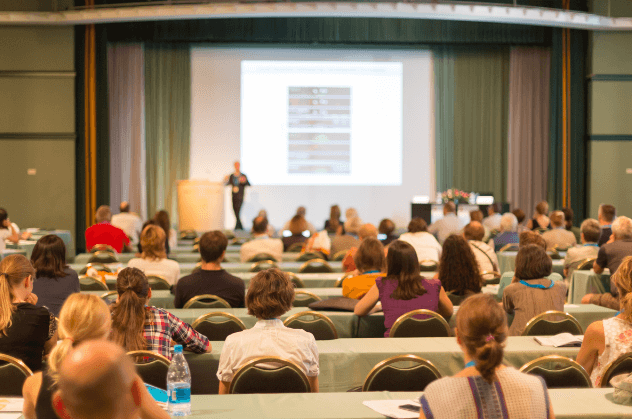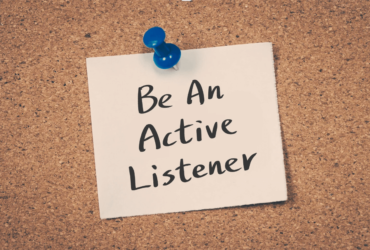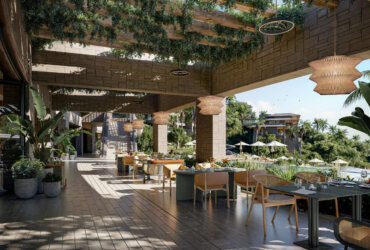Two days ago, I came across an item in news-aggregator Axios entitled 1 Big Thing: Permanent Price Hike that put forth the not-so-encouraging premise that many pandemic-era price hikes are here to stay, as in forever. Same may be true of escalating costs and competition for space in the hotel industry …
The Axios piece stated, “Some inflation-heightened prices may never come back down to pre-pandemic levels.” Reasons for this are assigned to some of the many things we’re weary of hearing about — supply-chain bottlenecks, worker shortages and manufacturing price hikes — that businesses routinely pass along to the consumer. The ca-ca indeed trickles downhill.
Pre-pandemic, overall inflation ran comfortably at or near the Fed’s annualized target of 2% – partly due to new and evolving technology, high levels of productivity, and relatively cheap and readily available labor. While prices in some sectors are beginning to ebb, many economists say we should be encouraged but realistic — they won’t go back to where they once were. Ouch.
For instance, used-car prices are coming down but they’re still an unbelievable 35% higher than a year ago. A used car! Rental car prices, according to research conducted by online travel site Kayak, revealed the average daily rental-car price for the 2022 Spring Break period [March 1 – April 15] was up 55 percent to $76 [+++] versus the same period in 2019. For summer 2022 [Memorial Day Weekend-Labor Day Weekend], the average daily price is expected to be $99 [+++], an increase of nearly 60% from the pre-pandemic norm.
Yep, the moon has officially jumped over the cow.
Is It Price-Gouging or Good Ol’ Supply-and-Demand?
Some of what’s happening with pricing in the hotel sector is undoubtedly a make-hay-while-the-sun-is-shining, post-pandemic recoil to make up for staggering pandemic era losses. A recent Facebook post to the group page SPIN [currently 1,100 hospitality professionals from across the nation], lamented a line-item on a post-event hotel bill.
Apparently, my meeting of 11 ppl [each] drank 6 gallons of coffee and 1 gallon of hot water. Wowza, they were thirsty. Each person consumed over 96 8oz cups of coffee. Seriously …
In another instance, I received this email response after I’d recently touched base with a hotel sales buddy in Hawaii:
We are doing great. Business is too much and it’s crazy what clients are willing to pay. Never seen it like that. Last year was a record year for the resort and this year is even going to [be] better.
Another reality is the rapid rise in rates for corporate groups. Two years ago, you might have allocated $5,000 per attendee for a program that got pushed back by COVID. Now, due to various factors, that cost has jumped 10-15% and you’re looking at $5,500-$5,750 per person. Multiply that by 100 attendees and you’re already $50,000-$75,000 over your original budget. Ouch again.
The Dastardly Resort Fees!
It doesn’t seem too long ago, that mandatory daily resort fees, hovered in the $12-15 range and afforded you “free” WiFi, gym access, a couple of “complimentary” bottles of water and your choice of a USA Today or local newspaper each morning at your doorstep. OK, fair enough.
Not anymore.
Long the bane of travelers and planners alike [another case of adding a “+” to the +++ at check-out time], resort fees have not only skyrocketed but have expanded beyond high-end resorts and convention centers that birthed this daily adds-up-fast, tack-on item. Resort fees now range from $25-35 and, in some cases, climb even higher.
Whereas resort fees have traditionally been charged in high-traffic resort markets like Las Vegas, Orlando, Hawaii and other island destinations, they’ve now encroached into urban markets like New York and Chicago and to quick-in/quick-out hotel properties near airports.
An online article last week posted by NerdWallet, a consumer advocacy site, also warned resort fees [sometimes called “amenity fees” or “additional fees”] are sometimes tucked in as a percentage of the room rate versus a specific dollar amount. Since most people aren’t interested in, or good at, calculating percentages “on the fly”, a single-digit add-on percentage doesn’t sound like much … until you tally your bill at checkout.
I won’t name specific hotel brands out of respect for the fact that they’re an integral part of what dynami does, producing meetings and events, but NerdWallet reports these percentages range from 2.71% to as high as 6.1%. Suddenly that outstanding group rate you negotiated so artfully doesn’t seem so outstanding or artful. When you’re in pre-event contract negotiation, don’t just focus on price concessions as it relates to room rate, meeting space, executive suites, an upgraded break at no additional cost, etc.. Check to see if [and how much] wiggle room might exist in the resort fee, too.
In fairness, it’s worth noting that the hotel brand’s parent company doesn’t dictate these resort fees 100% of the time. In some cases, the individual franchisee is the one who “guesstimates” what the market will bear. Test the waters for cost flexibility, before not after the fact.
A recent dynami-produced resort program included an offsite activity and, as is customary, we asked the hotel to provide our group some towels. Ordinarily, that would be a courtesy that came at no cost, unless of course, some of the often-high-end, branded towels happened to mysteriously “walk off”. In those cases, sure, we willingly agree to pay for replacements. Imagine our surprise when we got the post-event bill and discovered we’d been charged a rental fee … for each of the towels.
Beware these new hotel cost-centers that are popping up everywhere. We recently discovered at one property, that $6 can of soda now costs eight bucks. Don’t be afraid to question every dastardly little thing!
Otherwise, caveat emptor, or something like that.
Please understand, this blog is not intended to disparage our hotel partners, not at all. We in America enjoy a free market, supply-and-demand economy which is based on how much people are willing to pay for a particular item or service they desire or need.
Like all of us, hotels and resorts have been legitimately impacted by inflation [currently 8.5%, a 40-year high, and expected to rise further before it falls], as well as supply chain snags, a withering labor pool often driven by government subsidies, and price hikes from their providers. What I am trying to do is manage expectations of those who are eager to jump back in the pool after two years crammed full of Zoom calls, Microsoft Teams meetings, and hybrid events.
As I mentioned earlier, what once was in pricing may never go back. It’s a bitter reality but one we must all accept.
Corporate Groups Are Being Boxed Out By Vacationers
Another factor is the unprecedented demand created by leisure travelers making up for 2+ years of sheltering in place, masking up, working from home, canceling or postponing vacations, and burning out on virtual meetings and board games. As all forward-focused businesses do, hotels anticipated this demand and shifted their business model such that corporate groups are no longer only competing for dates and space with other corporate groups and associations. They’re now competing, and being boxed out by, leisure travelers, a more lucrative target for hoteliers because they typically pay higher room rates.
I spoke to a hotel sales professional in Florida earlier this week and told him I had a corporate group [650 rooms at peak for 3-4 nights] and inquired about availability. Ordinarily, this is the type of group that would be immediately welcomed. Not now. He told me our group needs didn’t align with the property’s current business protocol of a 50-50 split of corporate and leisure.
Corporations are also suddenly looking at summertime availability, a window on the calendar they’ve traditionally avoided so as not to compete with vacationing families. They’re also realizing to get what they want, when they want it, and at the right price, they may have to choose a tier-2 or tier-3 market where there’s less demand and greater value. Many planners are finding the best deals and greatest flexibility in the Caribbean, Mexico and the Dominican Republic.
Bottom-line: Protect Your Bottom Line
As we continue our re-emergence and return to face-to-face meetings – and let’s face it, F2F is more productive than virtual or hybrid events – please understand and accept the fact that 2022 is far different than 2019. Demand is currently so high that hotels are seeing record occupancy and booking rates and the early bird not only gets the worm [we’re currently working on a program for 2026!] but may be in the best position to avoid the take-it-or-leave-it attitude some hotels currently have. Just as home-buyers are routinely making offers over asking price as they compete with other motivated and qualified, all-cash offers, hotels are enjoying a pretty sweet seller’s market, too.
Having said that, even if you are lucky and score a great property for your preferred dates at an acceptable group rate, be forewarned: Some hotel standards that went downhill during COVID such as housekeeping, room-service, food quality, local ancillary support, like extra arms and legs to help keep your event on track and on-schedule, etc. haven’t fully rebounded. We recently worked with an agency to source 30 workers to help us with a convention. Only 10 showed up … and temp agencies aren’t cheap.
So it seems your dollar buys less these days, not only due to inflation but to myriad other factors, too. That’s why it’s probably best to work with meeting professionals who have a keener insight as to exactly what’s going on within the hospitality industry, including hotels and hotel-related services.
Reality check: The same type of annual sales meeting for the same duration and audience size you booked in 2019 will cost significantly more in 2022 … if you’re able to find acceptable space. Patience and acceptance are not only recommended, they’re absolutely imperative.
If you glean nothing else from this lengthy blog post, please remember this:
Competition is White Hot – Leisure travelers are currently formidable competitors for space and dates. They’re more attractive than ever to hoteliers so understand competition is fierce.
Room-Rate Sticker Shock – Since room rates are typically priced higher for leisure travelers versus groups, hotels are leveraging this demand to back-fill lost profits from the past two years. Corporate group rates have increased significantly, too. Brace yourself.
Don’t procrastinate and don’t go it alone! – The moment you know there’s a need to meet, get started. And do yourself a favor by calling in a meeting professional. Booking and negotiating for group business right now is more challenging and complex than ever. I’m not crying wolf, it’s the unvarnished truth.
Be Open-Minded – Trust your meeting professional and be open to the guidance you receive from them. They live this reality daily and understand the ins and outs of today’s travel/hospitality marketplace. They’re also likely, your best route to securing the greatest value.
And just say no to individuals drinking 96 cups of coffee over the course of a few days …
Cheers,
Kenneth Jones






